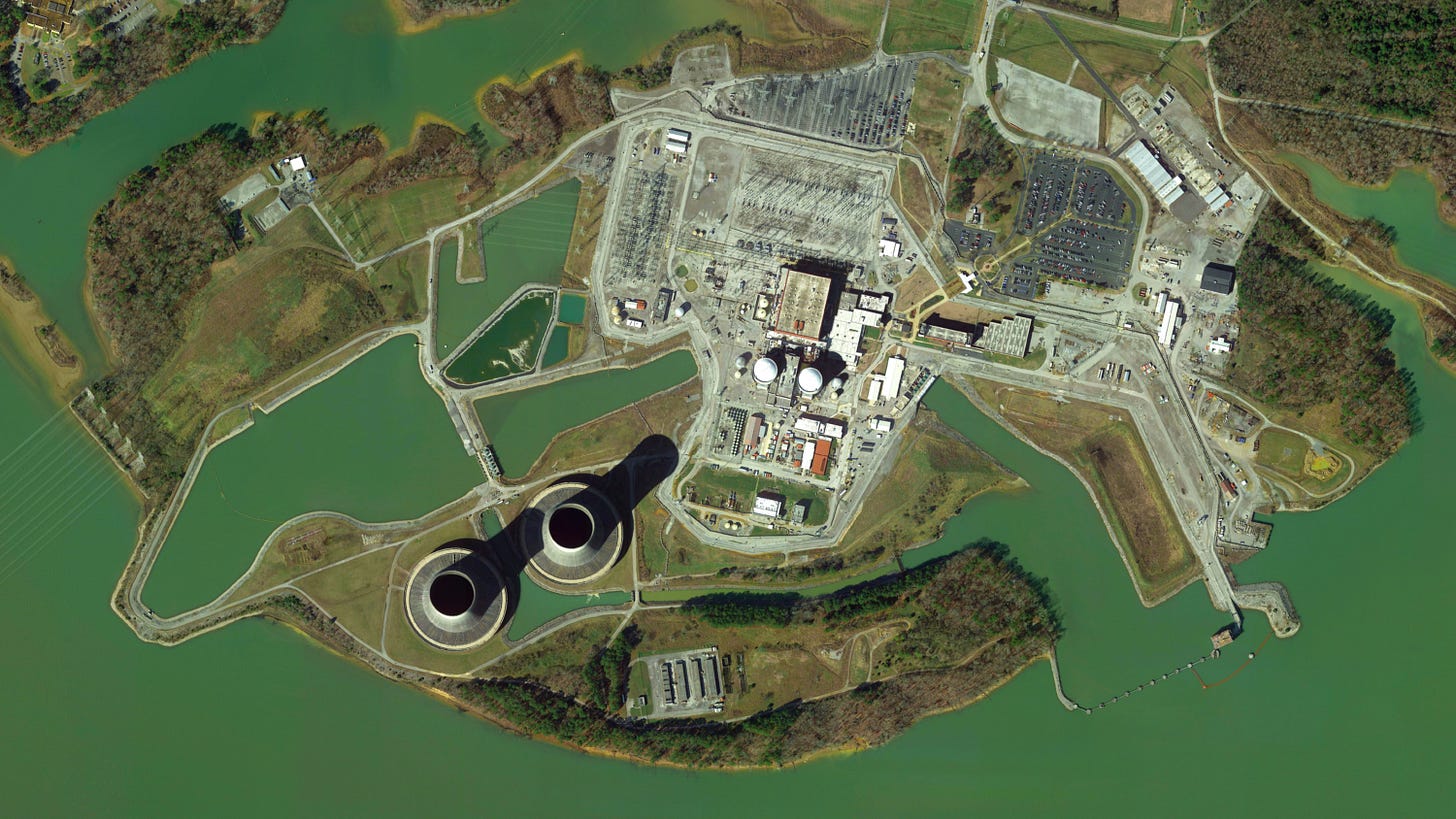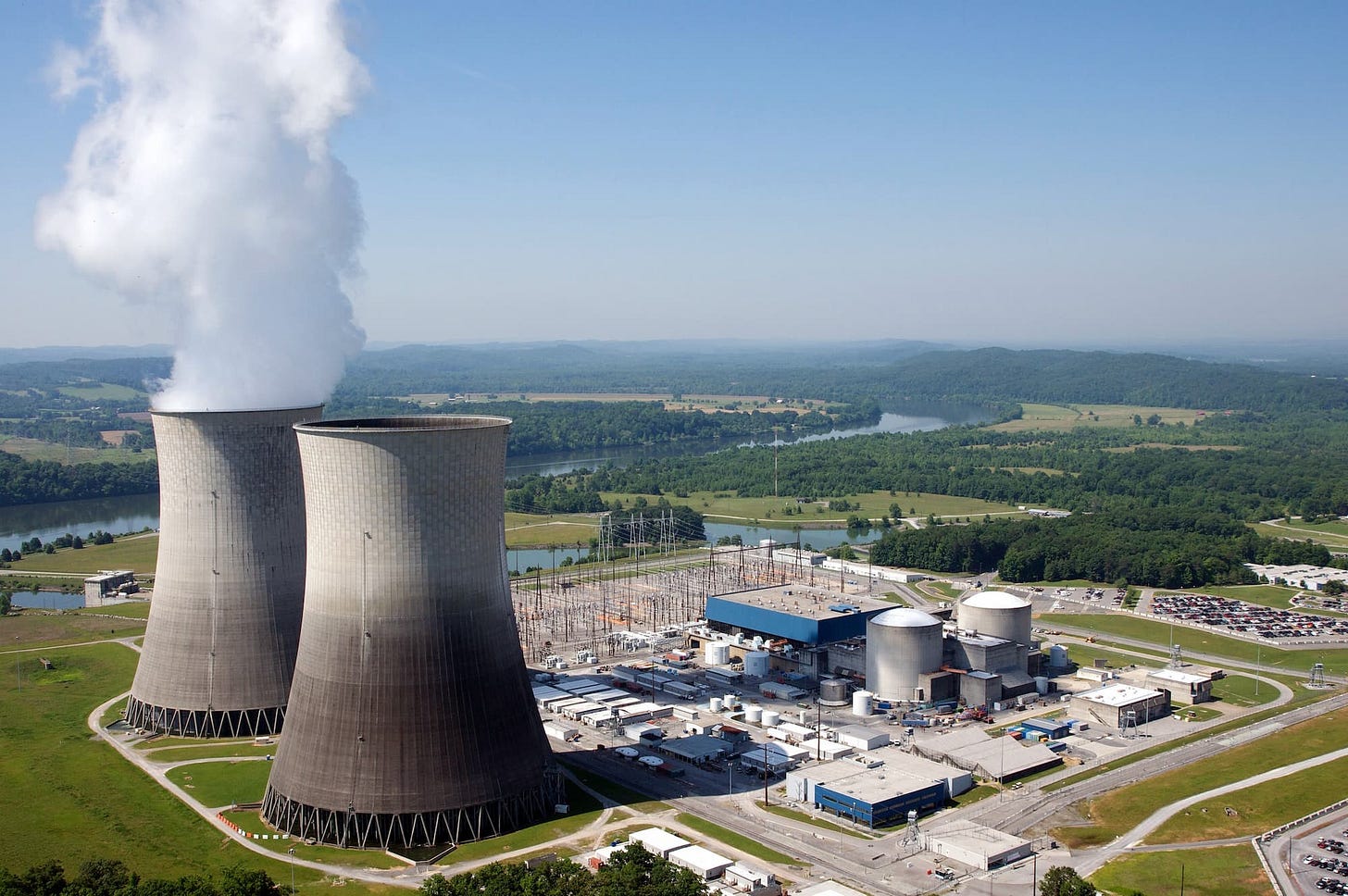As America faces rising electricity demand, growing climate threats, and a surge in AI-driven infrastructure, nuclear energy is gaining renewed attention. On May 23, 2025, the Trump administration issued sweeping executive orders to streamline the approval and construction of nuclear reactors, aiming to quadruple the country’s nuclear capacity by 2050. These directives signal a bold commitment to reinvigorate the U.S. nuclear industry, positioning it as a cornerstone of clean, reliable, and secure energy.
Nuclear energy has long been a powerful but underutilized part of America’s energy mix. It currently supplies about 50% of the nation’s carbon-free electricity and operates at full capacity 93% of the time—far outperforming wind and solar, which run at 33% and 23%, due to their reliance on changing weather patterns. Unlike intermittent renewables, nuclear plants provide constant, baseload power, making them ideal for powering data centers, electric vehicle infrastructure, and industrial operations that cannot afford downtime.

The environmental and health benefits are equally compelling. Nuclear energy prevents 470 million metric tons of CO₂ emissions each year, equivalent to removing 100 million cars from the road. Countries with strong nuclear programs have carbon footprints nearly 20% lower than the global average. As a physician, I see the effects of air pollution and rising temperatures on human health—ranging from asthma and heart attacks to heat-related deaths and the spread of vector-borne diseases. Nuclear energy offers a scalable path to reduce these harms by slashing greenhouse gas emissions.
We must acknowledge there are challenges with nuclear, including cost concerns, regulatory delays, and the long-debated issue of nuclear waste. But innovation is changing the game. Since the Three Mile Island partial meltdown in 1979, U.S. nuclear safety standards have dramatically improved, resulting in an exceptional safety record. Today, all commercial nuclear waste in the U.S. could fit on a single football field stacked 30 feet high and is safely stored on-site in steel-and-concrete dry casks. Waste management remains a critical issue but is increasingly manageable. The Department of Energy is now working with industry and communities to develop more robust long-term strategies.
And in a time of heightened politicization, deploying next-generation nuclear energy is an area that bridges the partisan divide. The ADVANCE Act, passed in 2024 with overwhelming bipartisan support, is accelerating reactor licensing and reducing bureaucratic barriers. Meanwhile, small modular reactors (SMRs) and microreactors promise lower costs, enhanced safety, and faster deployment. These compact reactors can be deployed in remote areas or integrated with existing grids—offering flexible, scalable solutions for the energy needs of tomorrow.
My home state of Tennessee is leading by example. Our state has a deep history in nuclear innovation, from Oak Ridge National Laboratory’s role in the Manhattan Project to the Tennessee Valley Authority’s current fleet of reactors. Nuclear already provides nearly 40% of Tennessee’s electricity, and TVA recently launched an $800 million initiative to build SMRs across the state. In January 2025, TVA became the first utility in the country to request a permit to construct an SMR, setting a precedent for public-private collaboration and innovation-driven energy policy.
From my time in the U.S. Senate, I came to realize that policy frequently follows public support. And public opinion on nuclear energy is shifting in favor. Between 2018 and 2022, support for nuclear power rose from 49% to 61%, reflecting growing awareness of its role in climate action and energy security. While concerns over safety, waste, and cost remain, they are diminishing as modern technologies and regulatory reforms take hold.
Private sector investment is also booming. Major tech companies are betting big on nuclear to power their growing data infrastructure. Microsoft is backing the recommissioning of Three Mile Island and Palisades; Google is investing in SMRs through Kairos Power; Amazon has partnered with X-energy to develop 5 gigawatts of nuclear capacity; and Oracle has secured permits for three SMRs. Financial giants like Goldman Sachs and Bank of America are now financing nuclear projects, signaling growing confidence in the sector’s economic viability.
While the U.S. led in pioneering nuclear energy, we risk falling behind as other countries develop innovative nuclear solutions. China leads in new reactor construction and nuclear patents, while Finland is building the world’s first deep geological repository for nuclear waste. France, Sweden, and South Korea continue to expand their nuclear fleets. To remain competitive and climate-resilient, the U.S. must not only scale up domestic capacity but also engage in global partnerships that foster innovation and training.

Encouraging signs are emerging. Projects like Vogtle Units 3 and 4 in Georgia—the first newly built U.S. reactors in over 30 years—highlight renewed commitment. The Natrium Project in Wyoming, backed by Bill Gates’ TerraPower, will replace a retired coal plant with a cutting-edge nuclear facility. Startups like Deep Fission are designing underground microreactors for data centers, aiming for deployment by 2029.
To move forward, the U.S. must continue to streamline regulations, invest in next-generation reactor designs, and improve public understanding of nuclear power. The ADVANCE Act was an important start, but more is needed to ensure long-term success. Public trust, scientific transparency, and bipartisan cooperation will be essential.
We are at a pivotal moment in energy history. By doubling down on nuclear—through smart policy, investment, and innovation—the U.S. can meet rising energy demands, cut emissions, and secure a healthier, safer future for all. As both a physician and former U.S. Senator, I believe that a strong nuclear future is not just an energy imperative—it’s the right investment for our climate, our economy, and our health.
For a more in-depth discussion on this issue, read my latest Forbes article: https://www.forbes.com/sites/billfrist/2025/05/29/powering-the-future-why-america-must-double-down-on-nuclear-energy/
Note: The views reflected in this article are those of the author and do not reflect official policy of The Nature Conservancy or any other organization with which he is affiliated.




Of course we need better energy sources. Cheaper, cleaner, less destructive to people and environments.
Harnessing fusion and expanding geothermal seem to be the future.
Senator Frist, we are not only doubling down with our effort, but with our capital. We are already working to coalesce the Advanced Energy ecosystem in TN and are finding more champions daily. I sent an email with an overview of our approach, and I look forward to talking soon.